Ankle Sprains
 The ankle is one of the most frequently injured joints in athletes. 90% of the time the ligaments on the outside of the ankle are injured. The anatomy of the ankle consists of 3 bones: talus, tibia, and fibula. The ankle consists of 7 major ligaments: on the lateral side (outside) 1.calcaneal fibular, 2. anterior talarfibular (most frequently injured), 3. posterior talarfibular, on the medial side (inside) 4. tibionavicular, 5. anterior tibiotalar, 6. posterior tibiotalar, 7. Talocalcaneal.
The ankle is one of the most frequently injured joints in athletes. 90% of the time the ligaments on the outside of the ankle are injured. The anatomy of the ankle consists of 3 bones: talus, tibia, and fibula. The ankle consists of 7 major ligaments: on the lateral side (outside) 1.calcaneal fibular, 2. anterior talarfibular (most frequently injured), 3. posterior talarfibular, on the medial side (inside) 4. tibionavicular, 5. anterior tibiotalar, 6. posterior tibiotalar, 7. Talocalcaneal.
Etiology of Ankle Sprains
- When the foot is in a plantar-flexed position (pointed down)
- Limited sub-talar joint eversion
- High degree of foot and ankle leg varus
- Planar-flexed 1st ray
- Ligamentous laxity (real flexible joints)
- Neurological deficit
- History of chronic ankle sprains
- Mulit-directional sports
- Jumping sports
- Irregular playing surfaces
Assessment
Ankle sprains are classified into 3 grades:
1. Minimal pain and swelling with stable joint and full range of motion
2. Moderate pain and swelling with a stable joint or minimal anterior drawer and decrease range of movement
3. Severe pain and swelling with unstable joint and minimal range of motion and inability to bear weight.
An X-ray is needed to rule out a fracture. Physical exam of the ankle is needed to provide a correct diagnosis of an ankle sprain. Stress X-rays may be done to evaluate ankle. Arthroscopy may be needed if MRI results find a tear of the talar dome or tibia plafond. This means you have cartilage damage in the ankle. There are many ways to treat cartilage damage in the ankle. Arthroscopy may reduce the post-op time to recover and require fewer incisions during surgery.
Treatment
- immoblization
- ice
- compression: unna-boot, air splints, strapping, CAM walker, cast
- rest
- NSAIDs
- Chronic swelling may require moist heat packs, warm whirlpool baths, contrast baths, compression stockings, electrogalvanic stimulation, arthrocentesis, steroid injections
- Agility and proprioceptive exercises to re-develope proprioceptive and neuromuscular functions
